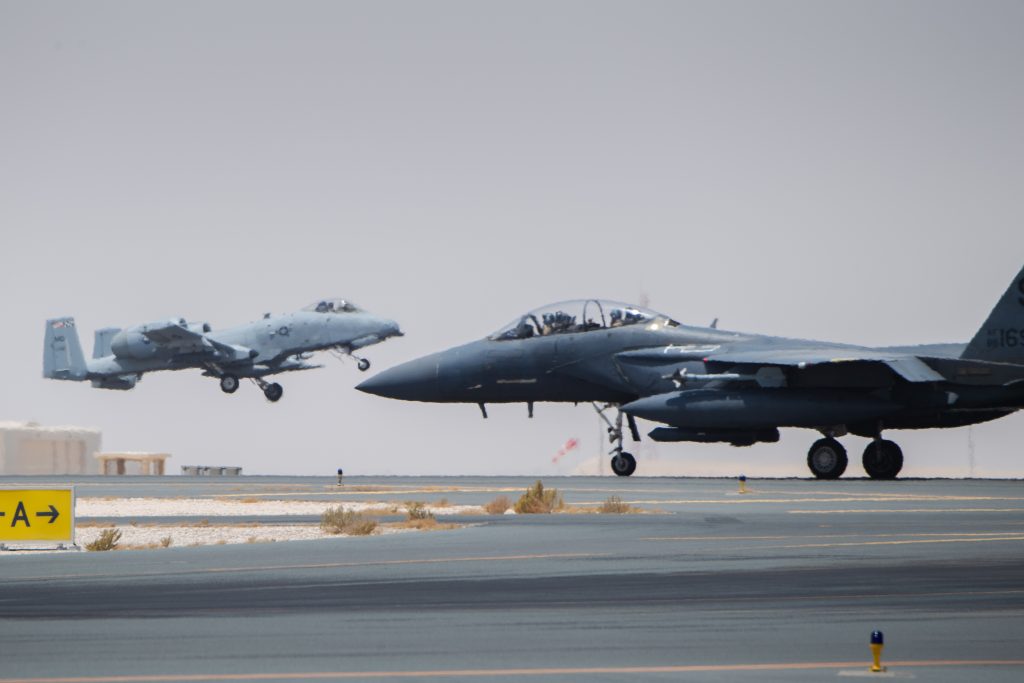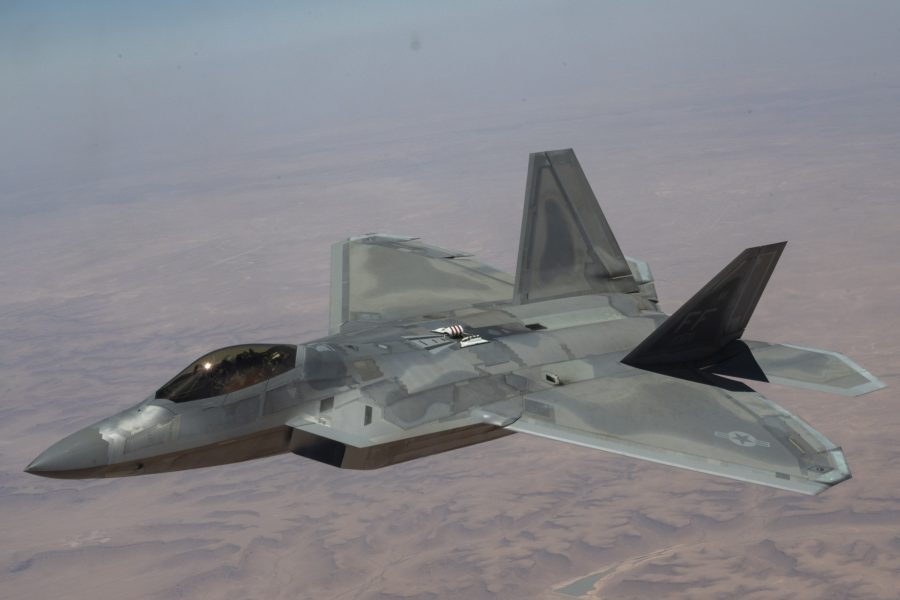More U.S. military aircraft, warships, and other assets are deploying to the Middle East the Pentagon announced Aug. 2. A U.S. Air Force fighter squadron consisting of stealthy F-22 Raptors is being dispatched to the region, a person familiar with the deployment told Air & Space Forces Magazine.
The Pentagon is also sending more ballistic missile defense-capable cruisers and destroyers, and may bolster land-based surface-to-air capabilities. The moves are intended to fend off or deter an attack from Iran on Israel and enhance U.S. forces in the region following the death by explosion of Hamas political leader Ismail Haniyeh in Tehran.
“The Department of Defense continues to take steps to mitigate the possibility of regional escalation by Iran or Iran’s partners and proxies,” Deputy Pentagon Press Secretary Sabrina Singh said in statement Aug. 2. “To that end, Secretary Austin has ordered adjustments to U.S. military posture designed to improve U.S. force protection, to increase support for the defense of Israel, and to ensure the United States is prepared to respond to various contingencies.”
The F-22 squadron will add to the U.S. Air Force’s three existing combat aircraft squadrons in the Middle East, U.S. officials told Air & Space Forces Magazine. F-15E Strike Eagles and F-16 Fighting Falcons fighters are already deployed to U.S. Central Command. So are A-10 Thunderbolt II attack planes.
Now, the U.S. is sending its premier fifth-generation air superiority fighter. To support the increased number of warplanes, additional aerial refueling tankers are also being deployed, U.S. officials said.
The deployment of an additional fighter squadron to the Middle East will provide increased “defensive air support capability,” Singh said in the statement, which did not specify the type of fighters being sent to the region.
President Joe Biden and Israeli Prime Minister Benjamin Netanyahu discussed “new defensive U.S. military deployments” during a phone call on Aug. 1, the White House said in a readout of the call. Secretary of Defense Lloyd J. Austin III ordered the moves on Aug. 2. Austin spoke with his Israeli counterpart Yoav Gallant on the morning of Aug. 2 and informed Gallant of “ongoing and future defensive force posture changes,” the Pentagon said.
The killing of Haniyeh in the heart of the Iranian capital was likely carried out by Israel, though it has not confirmed it was responsible. After Iran said it would retaliate against Israel, Biden and Austin said the U.S. would defend Israel from attack by Iran.
The warships will be deployed to the Middle East under U.S. Central Command and to the eastern Mediterranean near Israel under U.S. European Command. The USS Abraham Lincoln aircraft carrier and its strike group of accompanying vessels will replace the USS Theodore Roosevelt carrier strike group in U.S. Central Command. The USS Theodore Roosevelt has been in the region for the last month after redeploying to the Middle East from the Pacific. The USS Wasp, an amphibious assault ship that carries aircraft, and its Amphibious Ready Group/Marine Expeditionary Unit (ARG/MEU) has also been operating in the eastern Mediterranean. The Pentagon said it would “increase our readiness to deploy additional land-based ballistic missile defense.”

U.S. Air Force fighters shot down more than 80 drones launched by Iran against Israel on the night of April 13 and the early morning hours of April 14, part of a successful allied defense that neutralized an attack that included some 300 missiles and drones. Among the USAF planes were F-15Es from the 494th Fighter Squadron at RAF Lakenheath, U.K., and the 335th Fighter Squadron from Seymour Johnson. U.S. F-16s also participated, as did coalition fighters and U.S. Navy ships in the region. The bulk of the air and missile defense was handled by Israel, however, using surface-to-air missiles, its own aircraft, and other assets.
In April, as an Iranian attack seemed imminent, additional F-15Es were rushed to the region just a day before the April attack. “They were right in the middle of the flight, and that says something to our level of training, our level of capability, and then be able to do that as part of a joint team like that in a coalition,” Chairman of the Joint Chiefs of Staff Air Force Gen. Charles Q. Brown Jr. told reporters April 26.
The U.S. has rotated additional forces in the region, including fighter aircraft, since soon after Hamas’ Oct. 7 attack on Israel. The group killed roughly 1,200 people and took 250 hostages.
Air & Space Forces Magazine first reported the Pentagon would likely send additional U.S. Air Force fighters. The New York Times first reported the deployment of F-22s.
“As we have demonstrated since October and again in April, the United States’ global defense is dynamic and the Department of Defense retains the capability to deploy on short notice to meet evolving national security threats,” Singh said.
Now, as Iran plots a response to the Haniyeh killing, Austin said the U.S. is once again ready to aid Israel’s defense.
“If Israel is attacked, we certainly will help,” Austin told reporters July 31. “You saw us do that in April. You can expect to see us do that again. But we don’t want to see any of that happen. We’re going to work hard to make sure that we’re doing things to help take the temperature down and address issues through diplomatic means.”


